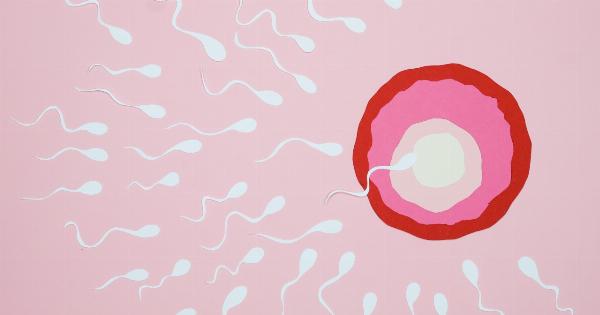In the past six years, thousands of families worldwide have been created through the marvels of modern science and assisted reproductive technologies.
In vitro fertilization (IVF) has emerged as a highly successful method for couples struggling with fertility issues to conceive and embark on their journey to parenthood. This article explores the groundbreaking advances in IVF, the increasing popularity of this procedure, and the joyous stories of thousands of families that have been created as a result.
The Evolution of IVF
IVF, also known as test tube baby technology or assisted reproductive technology, was first successfully performed by British physicians Patrick Steptoe and Robert Edwards in 1978.
Since then, this procedure has undergone significant advancements and refined techniques, leading to improved success rates and expanding the possibilities for hopeful couples.
Initially, IVF was primarily used to overcome fallopian tube disorders or male infertility factors.
However, as research and technology progressed, IVF has become a sought-after option for a wider range of infertility causes, including endometriosis, polycystic ovary syndrome (PCOS), unexplained infertility, and genetic disorders.
The IVF Process
The IVF process involves various stages, each crucial for successful outcomes:.
1. Ovarian Stimulation
The woman undergoing IVF is administered fertility medications, typically in the form of gonadotropin injections, to stimulate the growth and development of multiple eggs in her ovaries.
This step aims to maximize the chances of retrieving healthy eggs for fertilization.
2. Egg Retrieval
Using ultrasound guidance, the mature eggs are retrieved from the woman’s ovaries through a minor surgical procedure known as follicular aspiration. This is usually performed under sedation.
3. Fertilization
The collected eggs are then combined with the partner’s or donor’s sperm in a laboratory dish, facilitating fertilization.
This can be achieved through conventional IVF or via intracytoplasmic sperm injection (ICSI) for cases of male infertility.
4. Embryo Development
The fertilized eggs, now called embryos, are monitored in a controlled laboratory environment for several days. Typically, they are observed for approximately three to five days before selecting the healthiest embryo(s) for transfer.
5. Embryo Transfer
Using a catheter, the chosen embryo(s) are carefully transferred into the woman’s uterus, with the hope that implantation occurs successfully.
6. Pregnancy Test
Two weeks after the embryo transfer, the woman undergoes a pregnancy test to detect if she has conceived.
A Boon for Infertility
Infertility affects millions of couples worldwide, with emotional and psychological implications. IVF has revolutionized the realm of assisted reproduction, offering renewed hope to those struggling to conceive naturally.
The success rates of IVF have improved significantly over the years.
Advanced laboratory techniques, such as blastocyst culture and preimplantation genetic testing, have played a pivotal role in enhancing pregnancy rates and minimizing the chances of genetic abnormalities.
The Emotional Roller Coaster
The path to creating a family through IVF is an emotional roller coaster ride. Couples may undergo multiple cycles of IVF before achieving a successful pregnancy.
Each step of the process, from the anticipation before the treatment to the nerve-wracking two-week wait for the pregnancy test results, can evoke a range of emotions, including hope, anxiety, elation, disappointment, and resilience.
Thousands of Success Stories
Despite the challenges and uncertainties, IVF has created thousands of families worldwide. These families’ stories are a testament to the power of science and the unwavering determination of couples to overcome infertility:.
1. The Johnsons
John and Sarah Johnson had been trying to conceive for five years with no success. However, their lives changed after they opted for IVF. Today, they are the proud parents of twin girls, Emily and Olivia.
2. The Garcias
Carlos and Maria Garcia, a same-sex couple, always dreamed of having a family. They turned to IVF and found an egg donor and a surrogate mother. Their dream came true when they welcomed their son, Lucas, into the world.
3. The Parkers
Adam and Jessica Parker suffered from unexplained infertility. After several unsuccessful attempts, they finally achieved success with IVF and became parents to their son, Ethan. Their joy knew no bounds and inspired them to be vocal advocates of IVF.
4. The Nguyens
After years of battling infertility, Andy and Linh Nguyen’s prayers were finally answered with IVF. The couple now celebrates their daughter Mia’s birthday every year as a reminder of the incredible gift they received.
5. The Wilsons
For Greg and Rachel Wilson, IVF was their last hope. Despite facing numerous setbacks and tears shed along the way, their perseverance paid off. They welcomed their twins, Lily and Ethan, completing their long-awaited family.
A Globally Expanding Trend
IVF has gained prominence worldwide, with an increasing number of couples opting for this assisted reproductive technology. The reasons for the surge in IVF usage include:.
1. Technological Advancements
The constant advancements in IVF techniques, equipment, and laboratory conditions have greatly contributed to the surge in success rates. This has instilled confidence in couples seeking fertility treatments.
2. Increasing Awareness
Improved public awareness about infertility, IVF, and available treatment options has resulted in more couples seeking assistance.
Sharing success stories and normalizing the conversation surrounding infertility has played a crucial role in this regard.
3. Delayed Parenthood
Changing societal dynamics, career ambitions, and economic factors often lead couples to delay parenthood. As a result, infertility issues arise, and IVF becomes a potential solution.
4. Expanding Access
IVF treatment is becoming more accessible and affordable, with an increasing number of specialized fertility clinics offering these services. Availability in both urban and rural areas has further contributed to its expanding popularity.
Conclusion
Over the past six years, IVF has brought joy and hope to thousands of families worldwide. The strides made in this field have reshaped the possibilities of assisted reproductive technologies, allowing couples to experience the miracle of parenthood.
With each success story, IVF continues to create a ripple effect of happiness, bringing families closer and fulfilling the dreams of those longing for a child.






























